I never met Shane McConkey.
In the last few years of his life, when he was arguably at the top of his game pioneering ski culture and industry, I was a minor league professional quarterback playing on teams from Canada to Germany. However, I had begun spending off-seasons with my brother in a small Idaho mountain town and increasingly the winter alpine became my path, time on the gridiron my day job.
Six months after Shane’s death I played my final football game and promptly moved to Squaw Valley to officially trade cleats for ski boots. And though I knew his name, the true story of the man would reveal itself only with time.
When the first Powder Magazine of my first Squaw Valley winter hit shelves, the cover and half of the entire issue was devoted to the life and legacy of “The Most Influential Skier Ever”; it was nothing short of a biography. I was enthralled to learn of Shane’s magnetic personality, innovative spirit, and transformative skiing prowess. I devoured every word and somehow felt an innate connection to the man.
I thought it was cool that like me he grew up on the coast of California and became not surfer but skier. I smiled when I read it was a big deal for Shane to finally beat his mom down the hill, as ‘ma’ was my childhood ski buddy too.
I learned that he skied in the US Ski Team developmental program but began to prefer cliffs and couloirs to gates and bumps. He followed his passion for freeskiing with unwavering belief, disregarding those in the early 90s who said there was no future to be had in such a discipline. That really jived with me after listening to those who thought I was crazy to stop playing football at age 27 to become a bellman and a ski bum.
I laughed my ass off at his antics and exploits – fake falls, running into doors on purpose, snorting spaghetti up his nose and spitting it out his mouth. I laughed so hard on the can while reading about his naked spread eagle at Vail that my new roommate inquired with some concern to make sure “everything was alright.”
In the mid 90s Shane moved to Squaw and really began pioneering the freeskiing movement. A friend from work lent me the classic Scott Gaffney films, Walls of Freedom and 1999. I watched on repeat a ponytailed Shane tearing up Squaw and the Tahoe backcountry before my buddy politely asked for his DVDs back. I smiled through the entire G.N.A.R chapter of Squallywood. I got my hands on some footage of his character “Saucer Boy” – the whiskey-drinking snowlerblading-dimwit who Shane created for MSP to highlight the fact that professional skiing was taking itself a bit too seriously. Twelfth Night is my favorite of Shakespeare’s comedies, and Shane was indeed, “wise enough to play the fool.”
He thought outside every box. He skied down AK peaks on water skis and constantly used his creativity and inner drive to further ski development. He never submitted to the naysayers who said that fat skis would never be practical. He threw back-flips off anything and skied the rowdiest lines with power, grace, and humility. He dove into base jumping, began to take flight in wing suits, and powered the sport of SkiBase. In his own lifetime, he became Legend.
Then one day he jumped off a cliff in Italy and a binding-release malfunction caused a loss of control, and Shane McConkey fell to his death. The entire ski world, shocked and heartbroken, had lost their leader.
Yet as I began to meet people who had actually known the man during his life I realized that Shane’s legend would never die. Everyone had something good to say about him, from close friends to those who were lucky enough to once ride on the same chairlift. And every time I asked folks about him they inevitably tilted their head back and smiled with sweet remembrance before answering with some unique and wonderful story. He had positively influenced so many lives – from professional skiers to the kid from The Make a Wish Foundation whose wish was merely to ski a day with Shane. “Thank you Shane” bumper stickers dotted the parking lot, and for good reason.
For this undaunted man heard his inner voice very clearly, following it with an authenticity of which most only dream. He lived a life unfettered by societal snares, and he inspired people to move beyond the ephemeral to seek Truth.
Shane McConkey’s passing has not diminished his influence. Rather, like the apotheosized kings and prophets of myth his story has become greater in death – a real life Obiwan to our Luke – guiding all of us who venture into the mountains to seek our peace.
This past March 26 while skiing Squaw on the two year anniversary of his death I gazed up at Eagle’s Nest – the 60+ degree crown of KT which now also rightly carries the moniker McConkey’s. In all of my years on this planet I had never actively communed with a member of the deceased. Yet to the spirit of this man whom I never met, I began to speak words of thanks.
I thanked him for living such a passionate life in our so often dispassionate modern world. I thanked him for the imagination, dedication, and vision he gave the sport of skiing. I told him that while I did not know his wife and child personally, I had seen them recently and that they seemed happy.
And in an immeasurable moment, I felt a deep connection to the world. Mountains, snow, and sky became indistinguishable from my own consciousness. Other skiers on the hill, my friends down in the village, a long departed coach from my youth, and my parents were all somehow the interlinked. Things slowed down – at once everything became both hazy and crystal clear – and I wept ancient tears.
Whether or not Shane’s spirit heard my words that day does not matter. The manner in which this man chose to live is what matters. The fact that he still inspires is what matters. The fact that his passion and his memory endure is what matters.
I never met Shane McConkey, but it sure feels like I did. Thanks Shane.
Category: Articles (Page 2 of 5)
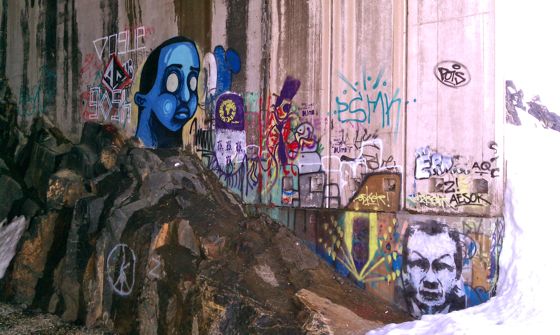
New culture meets old culture. Modern day graffiti in the same place Chinese laborers built the transcontinental railroad passage through Donner Summit over 140 years ago.
An interesting artifact from US rail history resides just west of Donner Lake adjacent to Old Highway 40. The tunnels and snowsheds from the original transcontinental railroad passage through Donner Summit create a horizontal line across Donner Peak. More than a century ago, Chinese workers provided the bulk of the labor in the excruciatingly time consuming and dangerous construction of the railway. Newly developed nitroglycerine was largely used for nearly two years of blasting required to bore through the mountain. A seventy five foot high retaining wall between two tunnels was built entirely by stacking natural rocks by hand. The snowsheds were designed to protect the train tracks from avalanches and snow drifts and were originally built with wood and later replaced by concrete. The four mile stretch was retired in 1993 by the active Union Pacific tunnel which passes through the mountain just south of the original line. The defunct section of the snowshed no longer contains rails and can be navigated on bike or four wheel drive in the summertime.
The same steep slopes on Donner Peak that created an avalanche hazard to the transcontinental railway provide a variety of nice ski terrain ranging from mellow cruising on the west side to challenging lines on the north face.
Members of Arne Backstrom’s Peruvian expedition provide more details on the accident in this Sierra Sun report.
Filmmaker Greg Stump eeks his way toward the completion of what may become his legacy piece…or will it? The much anticipated and long overdue “Legend of Aahhhs” is still being edited in Stump’s Idaho studio. Here’s an ESPN interview with one of the most influential and creative ski filmmakers of all time.
Book Review: A Wall of White
New book by Jennifer Woodlief documents 1982 avalanche disaster at Alpine Meadows
Review by Rob McCormick
 I like it when it snows. I like it when it snows really hard for days on end. I get depressed when the sun finally comes out after a long storm cycle. If you feel the same way you will likely love reading A Wall of White. This new book documents the mother of all storm cycles that ultimately led to the deadliest avalanche ever to occur at a North American ski resort.
I like it when it snows. I like it when it snows really hard for days on end. I get depressed when the sun finally comes out after a long storm cycle. If you feel the same way you will likely love reading A Wall of White. This new book documents the mother of all storm cycles that ultimately led to the deadliest avalanche ever to occur at a North American ski resort.
Nearly three decades after this historic slide, Jennifer Woodlief has written a detailed account of the event that occurred at the Alpine Meadows ski area on March 31, 1982. The book covers the history of the Alpine Meadows ski patrol and the dynamics of the slide and recovery. It also develops the cast involved with the tragedy including victims and rescuers.
In the early 1980s, snow safety at Alpine Meadows involved a scraggly bunch of ski patrollers and a variety of devices including hand charges, a 75mm recoilless rifle and a pack howitzer. Most patrollers were hard core, type t personalities that thrived on the inherent risk involved with snow safety. Most of the crew at one time or another had taken “rides” in smaller avalanches resulting from ski cutting potentially dangerous slopes to make them release. Storm days involved throwing upwards of 100 gelatin dynamite hand charges onto potential slide zones. Also used was a recoilless rifle which had a one hundred foot kill zone out the back end making it especially dangerous to operate. It was used to trigger larger unstable slopes from greater distances during brutal storm conditions. The rifle was retired in the early 90’s after it exploded and killed a forest service employee. Another device no longer in use was a military pack howitzer which rolled around on two wheels allowing for great mobility. Patrol would fire it from various locations around the parking lot. One time the howitzer was brought down to the intersection of highway 89 and River Ranch to release the unstable snow above the road. It’s operators misjudged the trajectory and fired a round over Mt. Watson and into Lake Tahoe.
A Wall of White goes to great length building characters that were affected by the avalanche. Several of the victims were ski vacationers staying at the condos near the base of the ski area. A few family members decided to walk through the blizzard to the Alpine base lodge via the parking lot at the perfectly wrong moment that the avalanche roared down from the mountain. Other casualties included Alpine Meadows employees that were stationed in the Summit Terminal Building which was obliterated by the avalanche.
Jake Smith was a very popular, free spirited ski patroller who was caught and buried by the slide while snowmobiling on the far end of the Alpine parking lot. After his death his brother spent three years lobbying to the US Board on Geographic Names to have a West Shore Lake Tahoe peak named after Jake. Many Tahoe skiers are familiar with Jake’s Peak which is a backcountry classic.
The most amazing survival story is that of Anna Conrad, who lived for five days trapped in an air pocket within the Summit Terminal Building. Her rescue was the first time a dog was used to locate an avalanche victim. Dogs are now commonplace with both Alpine and Squaw Valley ski patrols. The most tragic thing about the victims of this avalanche is that they were not typical risk takers that put themselves into dangerous situations to ski spectacular terrain. They were merely innocent bystanders that were caught extremely off guard by a massive climax avalanche that was on par with a hundred year storm type of event.
The book does a fantastic job at conveying the truly amazing amounts of snow that fell during a period of ten days. It is almost inconceivable that rescue operations had to halt for nearly four days after the avalanche because it continued to snow almost as much as it had to create the original avalanche conditions. When the storm finally subsided, a helicopter was used to drop explosives over the road below the Five Lakes area between Squaw Valley and Alpine Meadows. Some of the charges release slides that left crowns over twenty feet deep.
A Wall of White is a must read for Tahoe residents since the story it tells is a major part of North Lake Tahoe history and ski history in general. It is also a great read for skiers, adventure enthusiasts and anyone else who gets excited by copious amounts of snowfall and the potential hazards it brings to a community. Despite the grim side of the story there are many accounts of tremendous will to live and to save lives in the shadow of a killer avalanche.
My first year at Burning Man was 2002. I had no idea what to expect, except that I was supposed to bring all of my own food and water for a week – and that I was going to camp with Shane McConkey. I had recently moved to Truckee from Vermont where I went to classes during the day and watched Sick Sense over and over at night. Shane was a celluloid hero to me, not a real person whom I could possibly be meeting at Kmart in 20 minutes to get supplies.
We met in the parking lot and stocked up on batteries, Gatorade and Cheeze-Its. We landed in Black Rock City that night and after pitching our tents, the sun went down and we were off. I had a tiny, little girl’s bike and Shane was on his mountain bike, with a tall flag on the back. My main memory from that night was racing after that flag. Shane wasn’t waiting for me to catch up and I didn’t want to lose him and miss out on the tour. I managed to keep up. We crawled into a whale and cracked a Red Bull. We wandered into a large art piece that turned out to be someone’s RV and got rudely and comically kicked out by the owner. I crawled into a club behind Shane through a vagina-shaped hole. Shane had promised Sherry that he would be on his best behavior and so he took it easy, but he still managed to lead the way to all of the best art and parties.
The next fall I stopped by Shane’s Squaw Valley house, handed him some cash and walked out with a pair of Spatulas. They were 186cm – the only size they came in – and I was worried that they would be too big for me. Shane quickly disabused me of that notion. “They’re made for middle-aged weekend warriors,” he said.
I got them mounted and skied them almost every day. They were the sickest skis I’d ever had and the most annoying conversation piece. I considered making a sign, or lettering the back of my jacket to read: “Yes, they’re great in powder. No, they don’t ski that well on the groomers.” The questions never stopped coming from the first day I got on them until the last pow day I skied them last season. They weren’t the greatest hard-pack skis, but Shane had given me a tip that made them not all that bad. “Ski them like snowlerblades,” he told me. “The only part of the ski that is making contact with the snow is the short, fat part directly under foot, so carve with that, don’t try to use the whole ski.” I never cursed them on the groomers after that.
Shane became a friend. We went camping, and I went to his white elephant birthday parties. I got into the ski writing industry and interviewed him often for my stories. He was, by far, the best skier to interview, because he was more serious and articulate about the sport than any other pro. He was always questioning, experimenting and inventing, and he never let attitude or appearances get in the way of the progression of the sport.
Shane’s death last spring was a tragedy that continues to sadden us. While the initial shock has faded, the sense of loss is deepening.
I retired my Spatulas at the end of last season. After taking a year off, I decided to go to Burning Man again this year, along with the Spatulas. I took the bindings off and separated them. One was to be hung in the temple, an ornate sanctuary of sadness, loss and appreciation that is a cornerstone of Black Rock City. The other was to become a shot ski, with stainless steel shot glasses welded to it, for use at camp to celebrate Shane’s life and his spirit.
We took the skis out to Black Rock City and managed to use them as planned. On Wednesday, a group from our camp, including several very close friends of Shane, rode one Spatula out to the temple. We hung the ski, signed by Sherry, J.T. Holmes and other close friends, on the top floor of the temple, with two photos of Shane below it. Throughout the week, people added their own notes to the ski, along with bows, clippings and other memories. We rode back to camp and within the hour we were pouring shots and lining up takers for the shot ski. On Sunday the temple went up in flames along with the tokens of our love and loss. We all miss you Shane. As I wrote on the ski, I’m still following your flag.
I just returned from another incredible Red Bull project. This time it was in New Zealand. Miles D and I went down there and hooked up with the multitalented Chuck Berry, another Red Bull jumper from NZ, and his hilarious camera flyer buddy Sol. The mission was to climb/scramble up and jump off the 2,000 foot cliff about half way down the face of The Lion in none other than the majestic Milford Sound in Fiordland National Park. The Lion is one of the main peaks that rises out of the fiord right smack in the middle of Milford Sound. If you have seen pictures of Milford then The Lion is probably in it. The jump would require humping multiple loads of gear up over 4,000 feet to the summit where we would then have to rappel 2,000 feet down the sloping face to the jump location. Unfortunately, the day we arrived in Queenstown we were informed by the Dept. of Conservation that our permit to film the project had been pulled due to them considering what we are doing to be “commercial purposes”. This was a big disappointment especially since this jump has been a big dream for Chuck for over a decade. We later realized that there is all kinds of filming being done for “commercial purposes” in the area. These people simply just don’t bother asking the Dept. of Cun…… uhh…. Conservation for permission and it never becomes a problem. Duh! The oldest rule in base jumping is to never ask permission just forgiveness! We should have known better! 🙂 Well, actually when we are doing projects for Red Bull it kinda all has to be done legally so we had to ask.
So it was on to plan B, or at least to come up with a plan B. The DOC did give us permission to film in the next valley over, in Sinbad Gully. Chuck has done plenty of recon work in most of Fiordland over the years so he had a very good idea where we needed to look to find big cliffs for us to jump. It would all be completely exploratory base jumping. Most of the Fiordland area has never seen a base jump. The problem is access. The mountains in Fiordland are impressive. They shoot straight up and maintain a steep angle all the way to the top. Normally base jumpers can find a way to hike to a good exit point usually with minimal climbing required. Not here. Just about everything in the area is steep, rugged terrain that would require at the very least a few days of serious climbing and rope work. We had the time and the gear but didn’t have an exact jump that we knew was possible so we decided to hire a helicopter and went big wall hunting the easy way. We flew straight to to one of the gems that Chuck has had circled on his map. The mountain was called Terror Peak and the cliff just below it was perfect. A 3,400 foot jump to the valley floor with a 1,000 foot start and some fun ledges and terrain to buzz with our wingsuits. An easy jump and flight with some great visuals along the way down. Chuck had the honors and went first. Then I jumped my Vampire 2 and had a blast scraping the rust out while trying to fly along the wall. Miles and Chuck flew their S-Flys. We packed up along the riverbed and flew back up there for round 2. This time I did a 2 way with Sol. Miles and Chuck did a 2 way. At the bottom after many high fives and whoo-hooos we got to look back up at this majestic peak in the middle of one of the most beautiful places on earth that had never seen a base jump before and give the cliff a name. Miles coined the jump “Terrorflying” even though the jump was anything but that! For a base jumper, pioneering new jump sites, or what we call “Opening a new object” is perhaps the most exciting aspect of the sport. The sport is still quite young and the base world is still being discovered and mapped. To have the opportunity to open up a new site, and a big one, in a stunning place like Fiordland is an amazing experience. It was one I will not soon forget!
The next day we spent waiting out the weather. It rains a lot there! And by the afternoon of the following day the weather had cleared enough for us to rally up to the top of Sinbad Gully where we knew there was a small cliff next to a waterfall that was just begging to be jumped. By small I mean 800 ish feet which is pretty small for the terrain we were in. This cliff was really easy for us to dial in. We just flew up there, landed, and walked down hill about 500 feet to the exit point and jumped the thing without our wing suits. We didn’t even go to the bottom to inspect the landing area. It looked easy enough to land down there in the tall tussock and huge boulders! I mean, what could possibly go wrong? Nothing of course! Which is exactly what happened. Actually I think I may have missed a pinkie finger on my high five with Chuck when he landed right next to me. Will have to work on that. We named that cliff “Singood” as it was anything but bad!
My video camera shots of our jumps can be found here:
https://www.youtube.com/watch?v=1aG7zusxgGc
PLEASE CLICK “WATCH IN HIGH QUALITY”
Sorry for the crappy edit. I’m just learning the new iMovie. The best shots were from my VIO camera on my foot but I couldn’t use any of them. Couldn’t figure out how to get SD card footage into iMovie.
Here is a short little slide show from the Terror Peak jumps and audio description of what it is like to jump the camera position from Sol Vallis, our camera flyer.
https://www.stuff.co.nz/4852050a6002.html?source=RSSdailynews/headlines_20090219
https://multimedia.stuff.co.nz/taranaki/basejump/index.html
So with 3 jumps and 2 new objects opened in Fiordland and a bad weather forecasted we got in our rented RV and headed back to Chuck’s house near Queenstown to regroup for the next plan, plan C, which turned out to be an A! I’ll get to that shortly. Annoyed with the blasting wind while hanging out at Chuck’s house we put on our wingsuits and ran around in the field chasing sheep. We eventually caught one, well Chuck did anyway, and we got some nice pictures with the sheep. Can’t show you all those though, they’re X rated. The next day the weather cleared and we headed to the drop zone for a little wingsuit skydiving. We did 4 jumps from the Porter above the little town of Glenorchy and Lake Wakatipu. I flew the camera and wore my Pro Fly and got some nice video of Miles and Chuck flying together above the lake and the mountains. As we were landing on our 4th jump we noticed a heli had arrived at the dropzone. It turns out the TV show 20/20 in New Zealand had agreed to pay for some more heli time so they could film us! We, of course, couldn’t disappoint them! Ooh! Ooh! My arm hurts! Stop twisting it! Ok Ok! We’ll go do some sweet base jumps off some more new cliffs for you on your dime! We threw all our skydiving gear in the van and piled all our base gear into the heli and rallied up to another amazing place near Mt. Earnslaw.
It turns out that this place is a beautiful valley with a huge double staging ledge system of cliffs. There was a big glacier at the back of the valley and there were waterfalls cascading off of huge cliffs in several spots. Quite spectacular. Chuck and Miles had both been here before and had jumped the top cliff for a Discovery show called The Extreme Tribes which aired about 4 years ago. We went straight up to the top cliff and stared off of it for a while. The cliff was an 8 second rock drop. I really wanted to fly my wingsuit off this cliff and try to outfly the slope below before the second cliff system but I just wasn’t feeling it. It looked to me like there was a good chance that I could be very low and skimming the ground with no outs left or right if for some reason I didn’t fly well. If the slope below the cliff was a bit steeper then I probably would have gone for it. An 8 second rock drop is plenty but the angle I had to fly was a bit low and I hadn’t been flying my wingsuit much at all lately except for the two Terror Peak jumps. It is one of those situations that you find yourself in a lot in many sports. Like when you are about to hit a jump on your bike or skis or whatever and you are thinking “Well, I think I can make it … I’m pretty sure I can make it….. Awe screw it! I’m gonna go for it and see what happens!” Then you go for it and after you do you find out just how off you were or weren’t. Well, with base jumping its not really a good idea to just go for it unless you know 100% for sure! So I, very reluctantly, took my wingsuit off and just did a normal old flippy, spinny thing jump after videoing Miles and Chuck. We all pulled dirty high and Sol made fun of us. Its a great cliff, very overhung and has a long 2,500 foot parachute ride down to the valley floor.
We then grabbed our second rigs and blasted back up to the top for round two! This time I had other plans. There was an equally as nice cliff below and over to the right of the upper one with a nice area of tussock above it. I jumped the top cliff again and then flew over to the tussock ledge and landed. As soon as I landed I immediately had this overwhelming sensation of commitment. It was pretty intense. I was going for the double stager! Its on now! No turning back now, I already landed up here! Now I have to pack my parachute in this steep, bumpy tussock crap! As I started stowing my brakes I looked up to see Chuck and Miles flying around the corner and into view toward me. To my surprise Miles comes swooping in and lands right above me as Chuck flew by nice and low giggling at us and disappears below the cliff edge. Miles yelled down “I couldn’t leave my wing man!” and comes down for the high five. We then begin packing our worst pack jobs ever by far! We bet our usual $2 on who’s parachute would open …. the best. When we finished up and walked over to the exit point on this lower cliff we looked over the edge and realized that this cliff is even bigger than the top one. We could have easily jumped our wing suits off this cliff but we had packed slider down for a quick opening. Opening high on a big cliff is called “Altitude abuse” and boy did we ever abuse that one! Whatever though, we got to step off two cliffs in one go and complete our first ever double staging base jump! It was dam cool. No one had ever jumped that lower cliff so we named it “Berry Nice” in honor of Chuck for taking such good care of us on this trip. Now I really want to come back to this place to accomplish one of my big goals of doing the nonstop double staging ski base jump run with two parachutes. This would be the perfect place to do it. We tied on that bet too because both our parachutes opened dead on heading, another testament to how bomber and consistent base jumping parachutes and gear is. What an incredible day! 4 wingsuit skydives, 3 base jumps, 2 of them as part of a double stager and 1 newly opened cliff that is wingsuitable!
The next day we spent packing our gear to go back home and doing interviews with the 20/20 guys and with TV3 and with newspapers. By the late afternoon when all the interviews were finished we get a call from some American dude named Scott Harper that Miles had Facebooked with and who works at the local drop zone for the season. He wanted to take us base jumping off a small cliff in the The Remarkables right near town. Ow! Ow! My arm! Ok Ok! Jeez! We’ll go! The next thing we know we are hiking a few thousand feet up the hills to this nice, little slider down cliff with a very long parachute ride. It was a fun little jump that you could run a few steps before jumping off. We all had on headers and flew off into the sunset to our car and our plane ride home!
Thanks to all who made this trip possible and who helped along the way and to those of you who made it reading this far!
New Zealand, Chuck Berry and Red Bull New Zealand = A+
-Shane McConkey
Some of us on the Red Bull Air Force recently returned from a really
great trip to the state of Mexico in the country of Mexico near the
city of Mexico City. It was really Mexican and it was a blast! We were
there to shoot a multi sport TV show for the Mexican sports channel
Televisa. Kind of like our ESPN. It was a show funded by the state of
Mexico to help promote tourism in that area. Altius,
https://www.altiuspro.com/
the Company hired to produce the show did a hell of a job juggling
many different sports and trying to nail all the shots they needed in
a less than a week. There were mountain bikers, break dancers, free
runners (Parkour), Kirby one of our Red Bull Air Race pilots and then
there was Mike Swanson, Jon DeVore, Miles Daisher and myself there to
do some base jumping, skydiving, wing suit flights, mountain flying
and swooping.
Right off the bat and immediately off the plane with no sleep I was
hauled off straight to a never before been jumped 300 foot cliff with
our local base jumper buddy “Gabo” and Miles D. That was sweet. Git er
done! All went well and we named the cliff Gabo’s Moose Knuckle. Our
police escort, even all the way up to the exit point, ensured our
constant entertainment. These cops were blasting MTV’s party to go
1993 anthems the whole way. It was hilarious. Miles, of course, stuck
the snot out of his signature skyak jump from the helicopter,landing
in the beautiful lake at Valle de Bravo. I was the follow camera for
that one and that didn’t suck either. Jon and Mike jumped from the
helicopter and buzzed some mountains and a children’s water park with
their high performance Ferrari’s for parachutes while Miles and I
buzzed the same mountain with our wing suits.
Since it was a show to promote tourism for the state they found it
necessary to film us going to many of the stunning attractions they
have in the area. We didn’t complain! So we spent all our spare time
going to see things like the place where all the Monarch butterflies
migrate to. This was absolutely mind blowing. There were millions of
the things completely enveloping the trees in the forest. They were
crawling all over us. We went to the Estrella Cave. This was a very
stunning cave system with passage ways all over the place. We went to
the best water park I have ever seen. Water parks are for kids right?
Not this one! It was full on. We went to the university to watch the
break dancers and the free runners. After seeing that I can no longer
feel comfortable calling myself an athlete. These were the best break
dancers in Mexico and, of course, the best I have ever seen but Miles
D served them up and then it was on! That boy’s got some surprising
skills on the cardboard but I’m gonna have to give it to the pros, by
a hair! The pros were shocked to see him throw down some pretty tight
moves though! The free runners have skills and strength that was mind
blowing. Think Jackie Chan times 10. Check out Chase and Coal here:
https://www.3runmedia.com/
These two were flipping and jumping off, over, across, up to and down
to anything and everything no matter where we were and onto hard
concrete and rocks. These guys see the natural and urban world through
some of the most creative goggles I have ever witnessed and they do it
without any sports equipment except their shoes. They would be a shoe
sponsor’s wet dream. Definitely worth checking out their sport if you
ever get the chance.
Production also also took us to the pyramids at Teotihuacan
Archaeological Park. What an incredible place! This place has the 3rd
largest pyramid in the world, The Pyramid of the Sun. It is believed
that the inhabitants of this large city built it around the first or
second century BC and it was as large or larger than Rome was at the
same time, the largest city in the Americas. Around 600 AD the
inhabitants seemed to have vanished with out a trace. No one really
knows why or to where. It was really a great experience getting to see
this important piece of history. From there production took us to one
of the state’s nicer spas because we had it so rough over the last few
days. I mean, all this grueling parachuting and the all expenses paid
sight seeing and exploring was really wearing us out! So we got to
make fun of Jon while he got a facial and then the rest of us got
massages. No, we didn’t get happy endings.
On the last night the producers polished off a great week by staging a
Mexican party for us. They put us in ponchos and sombreros and
mustaches and then proceeded to let us pour large quantities of
tequila down our throats while getting us to eat yummy Mexican
delicacies like problamo (sp???) and habanero peppers. My mouth has
never been in so much pain. It was worth it though just to get to
watch Miles try and pretend he was fine while eating a habanero. We
failed miserably to beat up a pinata and let extremely large green
bugs crawl all over us. I think they got the shots they needed! This
was one of the best jobs I’ve ever had. We basically got paid to play
for a week. Cheers to all involved, can’t thank you enough and I hope
the TV show is a success and portrays how much fun there is to be had
in the state of Mexico in the country of Mexico near the city of
Mexico City!



















by Rob McCormick, August 5th, 2008
Last weekend I decided to try a new off-road trail in my 1971 Land Cruiser. I noticed an intriguing route on the map that starts just west of Cisco Grove at an OHV (off highway vehicle) staging area called Indian Springs. The route is called the Fordyce Creek Jeep trail and travels northeast into the central part of Jackson Meadows. The route looked especially enticing because it goes into the spectacular terrain that most people notice to the north of I-80 just after Emigrant Gap when traveling eastbound toward Truckee.
My Land Cruiser Creeping Up Cobblestone on the Fordyce
I had traveled several trails labeled “high clearance” and “OHV” on my map, but this was my first attempt at a trail designated as “4 wheel drive” on the map key. My Toyota Land Cruiser FJ40 has 4-wheel drive “low” gearing combined with 32-inch tires, 4 inches of lift and a winch rated for 9000 pounds so I figured I would be fine. My friend Jason was up for the mission, which was great as it’s always reassuring to have a wingman and second brain on board for backcountry adventures like this. Also on board the vehicle was a spare tire, tools and extra gas.
We started our journey at 5 am to avoid exposing the engine to midday heat. The Fordyce trail began by meandering through dense forest. After a short ride the trail started to climb and featured many cobblestoney sections with small and medium sized rocks that were a blast to navigate. A bit further along, we encountered some angled rock slabs that provided awesome traction for the FJ. Although we were fully enjoying the experience we started to notice that the technical features intensified as we progressed. Before long either Jason or I had to walk in front of the vehicle to verbally navigate the driver through hazardous sections. Eventually we came to a section that involved stacking rocks to create a ramp over some rather large boulders that we were unable to clear on the first attempt. We pressed onward and upward getting slightly nervous and keeping an eye out for potential turnarounds should we need to abort the mission.
Jason Mack Navigating Rock Slabs
The next obstacle we encountered was a 4-foot high vertical slab with a huge boulder on the left side. I shouted to Jason “this could be the end of the line.” He had driven most of the technical sections so far and stepped out of the FJ for a look at the problem. We assessed that it would involve a winch or cause vehicle damage or both. We then walked ahead to see what the next challenges would be. The next couple hundred yards featured three difficult sections and no space to turnaround. I was hoping Jason would opt to pull the plug and he did. Even though we had a winch the prospect of getting in a predicament where we would need to back down a long technical section did not fare well with either of us. We also figured we would begin seeing other jeeps start to head up the trail and we were blocking the road. We backed up about 50 yards and turned around.
A Custom Rock Crawler Perfectly Outfitted for the Fordyce
No sooner had we begun our descent than we heard and saw the first round of vehicles heading up the Fordyce Jeep Trail. The first three rigs were fully loaded Jeep Rubicons followed by an early 80’s FJ 40 Land Cruiser. All of them had huge tires, beefy suspension systems, and undercarriage skid plates. We pulled over to let them by and chatted with an older gent who got out of his Jeep to wait for one of his buddies. We explained that we had turned around having bit off more than we could chew. He offered to let us join their posse if we wished to give it another shot but we declined knowing our Cruiser was not worthy in its current state. He then replied “yeah I’m pretty well setup. I’ve got 35-inch tires and E lockers,” referring to locking differentials allowing for additional traction when stuck.
The next vehicles we passed were even more impressive. Most were full bore “rock crawlers” with massive tires, custom fabricated roll cages, and huge lift systems. One buggy even skirted out of our way laterally with four wheel steering. All of the rigs had gas cans, coolers and camping supplies firmly tied down to prevent items from going overboard during rugged travel conditions. Finally we arrived back at the OHV staging area to find about 30 full size trucks with flatbed trailers and their occupants in the process of unloading the sickest arsenal of off-road vehicles we’d ever seen.
By now we realized this trail certainly must have some kind of reputation in the 4-wheel drive community. As we chugged up Old Highway 40 back to Truckee Jason suggested we Google the Fordyce when we got home. What we found online made us very glad we turned around when we did. Many jeepers consider the Fordyce Jeep trail to be more challenging than the infamous Rubicon McKinney Trail on the west side of Lake Tahoe. It features three “deep water” river crossings where people suggest at least 35-inch tires even when it’s running at its lowest. The Fordyce also has five technical “winch hill” sections that, as the name suggests, require a winch or a highly modified jeep to navigate. Many guides recommend you only try the trail with a lifted and locked vehicle with skid plates and large diameter tires to minimize body damage and maintenance to your rig on the trail. Other stories warn of “hydrolock” during water crossings where water gets in the engine and stalls the vehicle. We also came across hairball YouTube footage of people winching their completely submerged trucks across the river. It’s easy to see why jeepers travel in numbers to help each other out.
In all we had a great adventure on the Fordyce Jeep Trail. Although humbled by the technical aspects we felt fortunate to get away with no real damage to the cruiser. Maybe we will give it another shot someday once I have made some improvements. In the meantime its nice to know there are people out there who voraciously accept the challenge of the Fordyce Creek Jeep Trail.
Videos From Our Trip
By Susan Schnier
Cranking down my buckles under 20-degree bluebird skies, I prepared to drop into 3,000 feet of new, untouched powder. A familiar frenzied rush was upon me again as I crossed the boundary line marked “Esqui Extremo–Daredevil.”
The pitch was significant, and without the adrenalin pumping through my veins, I might have been nervous, but there was no time for that. My tracks became only the second to mar the slope that day. The turns were sublime, the conditions surreal. The run was so long, and the powder so deep, that I considered stopping mid-way down. But with post-season legs and the exhilaration of the epic conditions—not to mention the powder hounds riding the lift directly above me—I embraced the burn and refused to stop.
“Not such as big deal,” you might think. “Could be me on any given day between December and April,” you might say. Except, it was the beginning of July, and I was in Las Leñas, Argentina, breathing the cold, dry air of the jagged Andes, and celebrating an unusually good start to the Southern hemisphere’s ski season.
When I had left Tahoe several days earlier on the summer solstice, temperatures were well into the 90s and wildfires were consuming the once-forested hills between Truckee and Reno. Summer had officially set in, and only a few patches of snow were left in places like Shasta and Hood. But now winter was in full swing again.
I learned the basics in high school, but until now I hadn’t cared much about the earth’s rotation and the effects of gravity. Yet, all of a sudden, at the summit of Las Leñas, they became a lot more interesting as the possibility of an Endless Winter appeared. They meant that while the Northern Hemisphere rotates closer to the sun in June, forcing most North American skiers to hang up their skis for good, the snow is just beginning to fall in the high mountains of South America.
Though the journey to Argentina was long, time and space dissolved during the pilgrimage, and the final destination became my sole focus. We left the States from Atlanta around 10pm, and after an overnight flight, arrived in Buenos Aires in the morning. So far we had not even lost a day.
From Buenos Aires we boarded a domestic flight for the two-hour trip to Malargue, a small town with desert plains reaching out in every direction toward the high mountains that encircle it. Except for the 30°F temperatures, we could have landed back in Nevada and the landscape wouldn’t have given it away.
From Malargue, a festive bus ride up a narrow canyon took us high into the mountains to Las Leñas, only about an hour outside of town. As we approached the base village, we couldn’t Crossing the boundary into “Daredevil” see a thing. Night had fallen and snow and wind were pounding the mountains. There was nothing to do but sleep. Our first morning in Las Leñas presented us with blue skies and a foot of new snow.
To get an idea of the terrain and the layout of the village, picture Las Leñas as the Alta of South America. It has the steepest and most technical terrain of any of the more than seven ski areas that stretch from north to south along the Chilean/Argentinean border. Located at the end of a long, winding canyon road, there is no town to speak of, just a handful of hotels, a casino and a couple of ski stores. The skiing, rather than the mountain culture or the nightlife, is what it’s all about.
In Argentina, the ski season starts in mid-June and lasts until September, with July and August as the most reliable (and crowded) months. Though there are enough moderately pitched, groomed runs for the intermediate, the secret to Las Leñas lies in its lift-served off-piste (ungroomed) and open boundaries. In terms of longer tours and pure backcountry, you just have to look up from anywhere in the valley and scout lines in the many skiable bowls or chutes. With some Spanish skills, you may even be able to obtain pointers from one of the guides, easily spotted by their neon yellow jackets.
Open Boundaries at Las Leñas
In Argentina, like in Europe, ski area boundaries are open and you will not encounter any resistance when crossing them. Unlike in Europe, however, much of the winter backcountry in Argentina remains untracked, not because it is too dangerous, but rather because it has not yet been explored.
The possibilities are truly endless. Reaching the summit of Las Leñas takes 45 minutes on three double chairs. It is likely to be quicker and certainly warmer if you walk or skin to the base of the Marta lift (approximately 1,000 feet elevation gain). On our first day, as we rode the Marta lift under clear skies, the off-piste run, “Daredevil,” taunted us from below. Coated with a foot of fresh snow, the 2,586 foot, out-of-bounds pitch directly below the lift would become our warm-up for Las Leñas’ open boundaries.
Daredevil
From the summit, Daredevil begins as wide bowl with a few skiable chutes higher up the ridgeline on the skiers’ far right. Half way down, the bowl funnels into two separate couloirs. On a powder day, the couloirs attract snow like magnets. But beware, though Daredevil seems benign enough from the chair, less skilled skiers have been killed there on multiple occasions.
Though the run is directly under the chair, it is technically out-of bounds. On an icy day it is easy to lose an edge and tumble into the rocks atop the dog-leg chute to the skier’s right. That said, if you take the proper precautions and get up bright and early, do not miss out on Daredevil.
Eduardos
Once Daredevil got tracked, we rode the Marta lift again, got off to the right, and traversed around the ridge to Eduardo’s. We dropped into the narrow entrance and veered right, heading up to a narrow opening between two large rocks. From there, the terrain, which seemed to go on forever, was pretty straightforward—there was nowhere to go but down. We emerged after a short trek, having skied another 3,000 feet of powder, onto a groomed run leading down to the base. Though both of these runs are fairly easy to locate from these directions, we got some help on our first day from Las Leñas local and guide-extraordinaire, Diego Lopez.
Guides at Las Leñas are not cheap, costing between $57 and $200 per person per day (depending on the size of your group), but they’re a pretty good idea. They’ll help to evaluate safety hazards and offer recommendations for the best routes. Much of the terrain at Las Leñas is rocky and avalanche prone, so evaluating the terrain carefully is important. In any event be sure to carry avy equipment, and definitely wear a helmet.
The Necklace
For some wide-open bowl skiing, Cerro El Collar (the Necklace), is a 45-minute hike from mid-mountain. To access it, veer right from the top of the Marta lift, and go down the piste (groomed) Apolo run. Midway down, directly under the steep couloirs to the right, turn right off the trail and trek upward—winding up the side wall of an open bowl and then up a final lip. There, an expansive basin spreads out below. It was early season, so we stayed in the center of the bowl to avoid the many jagged rocks that line the edges. The bowl funnels into two chutes before opening up again and meeting up with a groomed area near the base of the Neptuno lift.
For the most part, Las Leñas’ locals are baffled by the very notion of hiking. With a summit elevation of 11,155 feet, Las Leñas has seemingly endless amounts of terrain. Yet, many of the lifts service only the moderate, intermediate runs, which most Argentineans like to ski. Argentineans come to the mountains to improve their skills onpiste, or to lounge and be seen at the restaurants, bars and discothèques around the village. So, there is little competition for the right to make virgin tracks down the hike-to terrain. After a full day of powder skiing, as we sat at the base, we overheard a local couple pointing up toward our tracks. Their facial expressions said it all, although the only word that we could make out was “loco.”
Other Ski Options
After two awesome days at Las Leñas, no one in our group wanted to leave. We couldn’t imagine that the skiing could get any better elsewhere, but there was more to see and we all conceded that we should move on. With a great deal of regret that our stay at Las Lenas was so short, we returned to Buenos Aires, from where we headed to Bariloche, a ski town nestled in the Patagonia range.
Bariloche
If Las Leñas is the Alta of South America, then Bariloche is the Tahoe. Situated around a large, sapphire lake, and surrounded by mountains, the town of Bariloche offers extensive shopping, fine dining and a rocking nightlife. Several ski areas, built into the Patagonia range, are within a 20-minute drive from town. Two of the main areas, Catedral and Alta Patagonia, share the same mountain yet are separately owned and require different passes.
Board the chairlift through a mall at the base of the two areas, and then ride to the treeline, where vast open slopes stretch out below. Most of the lift served skiing is on-piste, and extreme carving is still popular among local guides and instructors. Off-piste opportunities require short (20-minute) hikes from the summit and are mostly open-faced pitches. The views of the Patagonia range are truly stunning, and most of the surrounding mountains are begging to be skied, though off-piste opportunities at Bariloche are more limited than at Las Leñas. On a good day you can hike anywhere that you can see, or ask a guide for recommendations. Have lunch at the top of Catedral, where you’ll be surrounded by a panorama of jagged snow-covered peaks, and feel like you’re at the top of the world.
Buenos Aires
On our way home to North America we spent the obligatory few days in Buenos Aires. Walking around town with sun-reddened faces, tingling legs, and not-so-fresh clothing, we felt somewhat out of place among the Portenos, or inhabitants of Buenos Aires, who seemed to be some of the most well-dressed and sophisticated people in the world.
There we bought batteries for our cameras, and had a few nice meals. In a day and a half, we crammed in one seductively captivating tango/dinner show, a walk through the filigree tombs at the Recoleta cemetery where Eva Peron is buried, and a drive through the diverse “barrios” of this European- style city.
Economy
As we go to press, reports of economic and civil unrest have rippled throughout the
news, and Argentina is on its fifth president in the past two months. As of last summer the Argentinean Peso was equal to the US Dollar, but recently the Peso has been devalued by 30%. Though the political climate may be volatile, travel companies continue to encourage travel to Argentina, and if you are on a tight budget, now is actually the best time to go.
The Return
Though July is still early in the Argentinian ski season, we lucked out with plenty of powder. Our hosts, guides, and new friends made sure that we didn’t miss out on the best snow or the hottest nightclub, tolerating our broken Spanish or using English for our benefit. We could even drink the water in our sister continent. Returning to the burning forests and unrelenting heat of a California summer, I reflected on the wonder of that delicious taste of winter in July. The experience was surreal, and it certainly helped to get me through waiting for the first of our snows to fall in October.
The only question is, will summer here ever be the same again?
• Lift tickets: $30 to $40 at Las Leñas and $21 to $44 at Catedral Alta Patagonia
• Airline: Delta Airlines, red-eye from Atlanta to Buenos Aires
• Hotels in Las Leñas. The Piscis hotel features a pool, hot tub and sauna, two restaurants (Italian and traditional Argentinean), and a casino. In Bariloche, the
Llao Llao hotel is a world-class resort/hotel that is definitely worth seeing, even if you can’t afford to stay there. Bariloche also has many reasonably priced hotels on its main streets. There are also several hotels at the base of the mountain.
• Web: laslenas.com & catedralaltapatagonia.com
•Package Deal:Moguls Mountain Travel at www.moguls.com
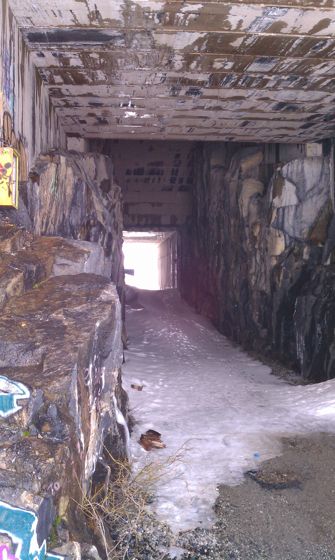
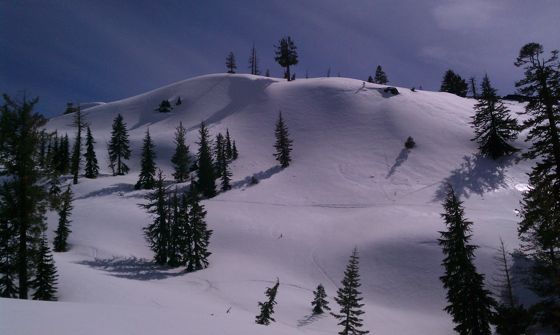
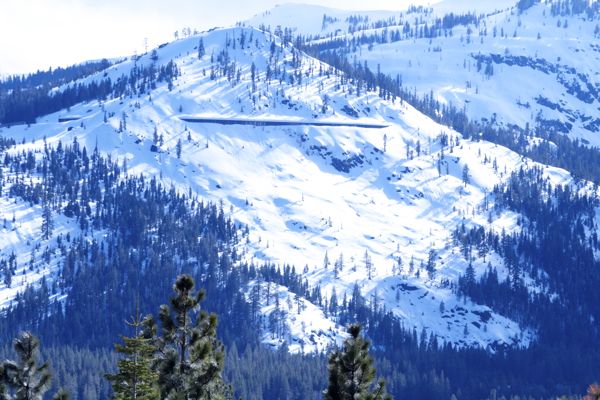

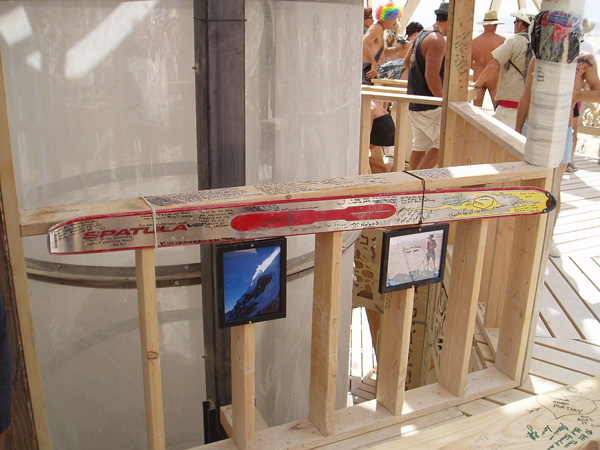
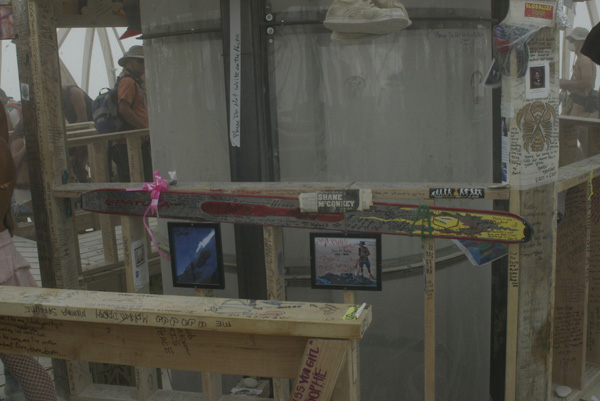
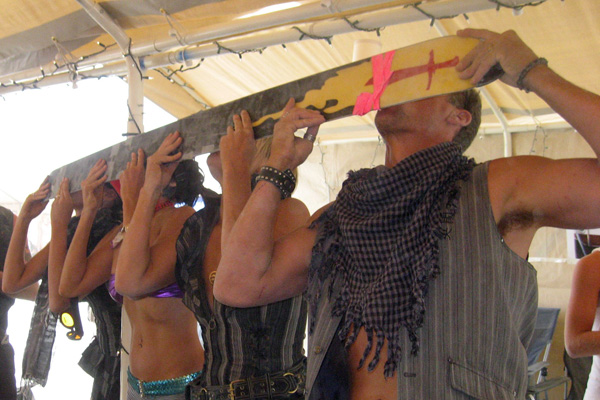

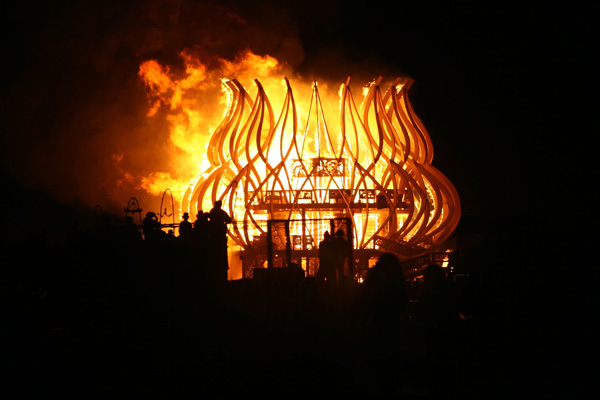
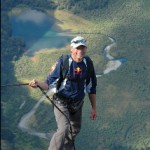
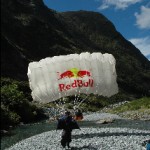
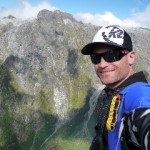
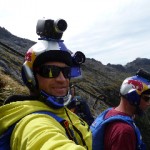
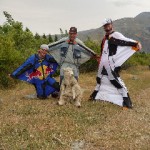
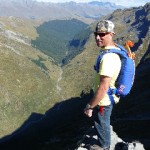
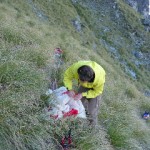
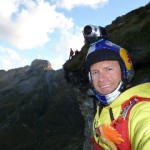
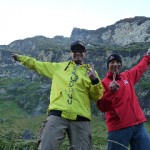
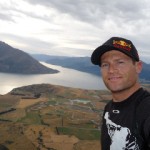
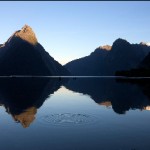
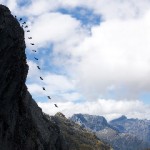
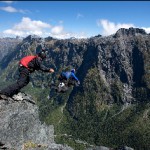
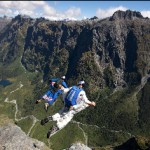
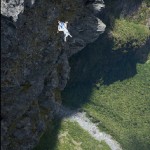
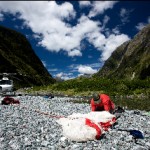
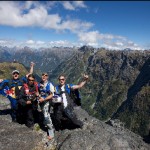
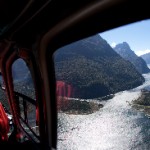
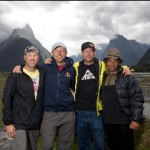
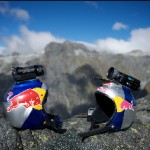
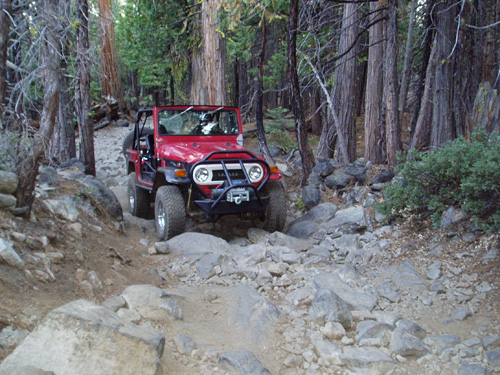
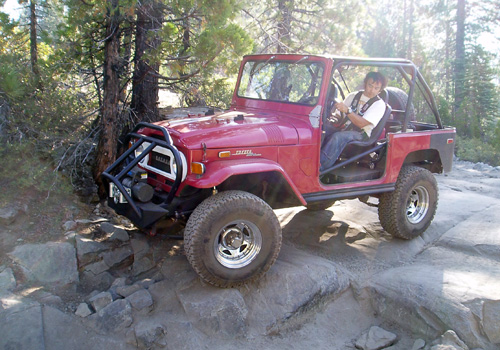
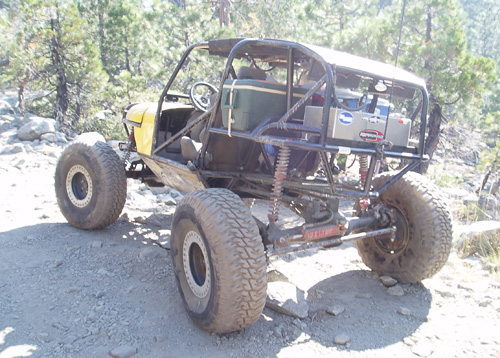
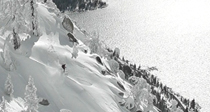
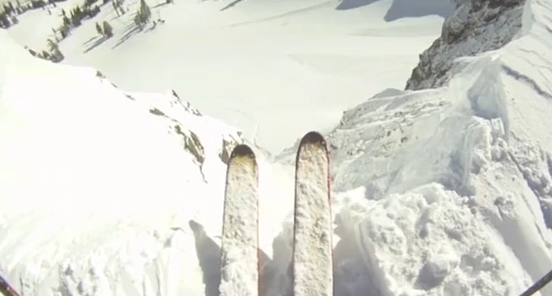


Recent Comments